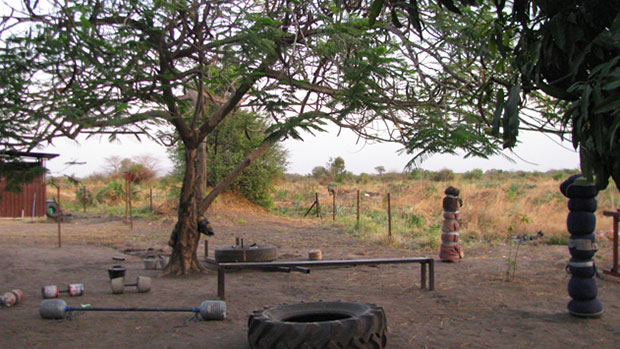Here's what you need to know...
- When there's pain in a movement, compression wrapping offers extra stability to allow a safer range of motion.
- Once you remove the band, blood floods back into the area, creating an influx of nutrients that was previously limited.
- While it's no replacement for a soft tissue therapist, it is an affordable and extremely convenient recovery modality.
The better we move, the better we can be in the gym. Because of this, we dutifully stretch, foam roll, and perform joint mobilization drills like good boys and girls.
However, a new method is showing promising results in very little time. Considering that it's cheap and you can do it yourself, it's time to take a deeper look.
Compression wrapping (popularized by Kelly Starrett) is where you wrap the injured joint or muscle in elastic material. Compression wraps are common in weight lifting, but we're talking about a more aggressive wrap for a very short period of time (30 seconds to 2 minutes), and for a much different purpose.
Let's say you have a situation where pain is present. Compression wrapping offers extra stability, which allows for a safer range of motion. Research by Kyle Kiesel shows that if there's pain during a movement, we aren't certain how the nervous and motor systems will respond.
If adding compression can reduce or eliminate the pain for a short time, we can now safely work through a range that was previously impossible.
Due to the tight compression, blood flow to the area is reduced, which is why the recommended duration is only between 30 seconds and 2 minutes. Once you remove the band, however, an influx of blood and nutrients flood back into the area.
As further evidence, a well-known approach to get adhered muscles to move again is to put them under pressure and then add range of motion, such as in Active Release Techniques (A.R.T). While this compression method isn't as specific as A.R.T, it does allow you to work through adhesions.
First you need some semi-stretchy rubber bands. Original tests used a bike inner tube, as shown in the videos below. Although these work, newer materials can stretch up to 150% longer, making for better wrapping.
These higher-tech bands come in 7-foot lengths and cost around $25 for a pair. Considering they can work on most areas of the body and are portable, they're a good investment.
A stiff joint can obviously limit movement, but it also affects surrounding areas. It's necessary to get as much ROM back into that joint as you can. Compression wrapping the area while self-mobilizing the joint helps speed up those results.
Wrist Compression Wrap
Elbow Compression Wrap
You can wrap almost any joint, minus the spine, of course.
When you have scar tissue or stiff muscles, compression wrapping allows you to tack down the area and then move through a ROM, grinding on that stiffness. When the compression is then removed, you open up the floodgates to re-nourish the area with new blood.
Hamstring Compression Wrap
Knee Compression Wrap
In a perfect world, we'd hire physical therapists to work on our joints every morning and chiropractors to do A.R.T. on our scar tissue/muscle adhesions every night. But this is the real world, and compression wrapping at least gives you a chance to take some ownership of the recovery process instead of sitting by passively.
As always, be smart. Don't go past 2 minutes, at the most. If it feels numb or tingly or worse, stop.




